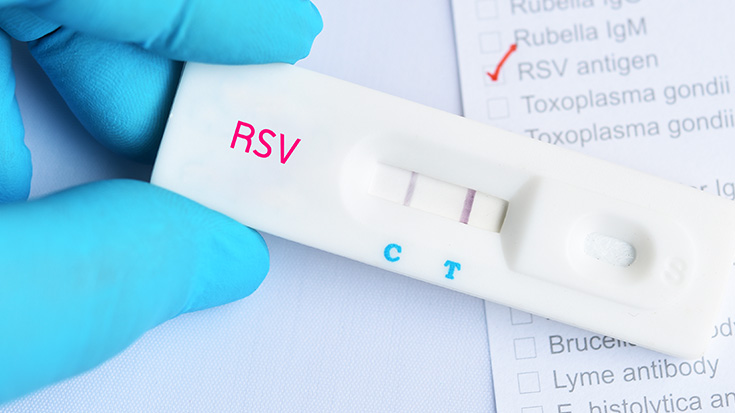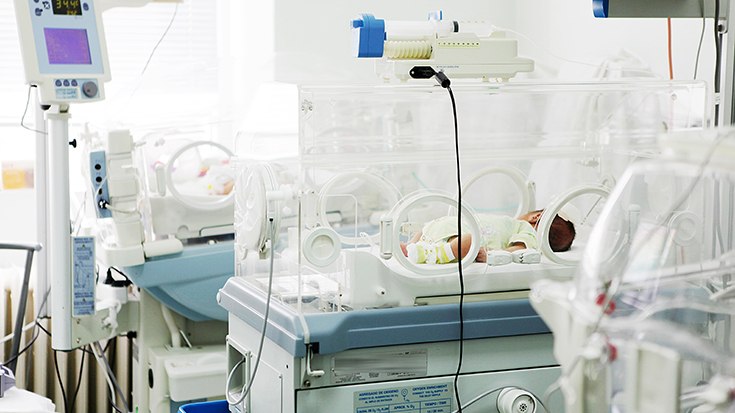
As you are working the night shift, you are called to the emergency room for a critically ill pediatric patient. The patient was involved in a motor vehicle accident and requires specialized care at a Trauma Center. Your hospital calls the local medical helicopter transport requesting them to transport this patient. After the on-duty pilot checks the weather, the program says the current weather is below their established weather minimums to safely conduct the flight. It’s a 50-minute ambulance trip to the trauma center but only 15 minutes by air. There are other helicopter programs nearby, so a call is made to a second program which also says weather is a factor. A call to a third program is made and they agree to take the flight. You are doing your best to care for this pediatric patient, hoping the helicopter will soon arrive. A trauma alert of your ER is paged out. Local EMS is responding to a potential helicopter crash just outside of your town. As you await arrival of more trauma patients, a call from local EMS comes in to say all aboard the helicopter did not survive. Due to heavy fog and low clouds, it took 25 minutes for EMS and Law enforcement to find the crash scene. The helicopter appeared to have flown into a wooded hillside just outside of town.
What is helicopter shopping?
Requests to transport a patient by helicopter are made directly from the scene of illness or injury by emergency medical service (EMS) providers, or by health care providers who want to transfer a patient between health care facilities. Helicopter shopping is defined as a process of making sequential requests to multiple providers in an effort to secure air medical resources for a call response that some agencies turn down due to the factors such as weather noted above.1 This term, as it typically is utilized, implies that the facility or emergency medical service making the request is not forthcoming to subsequently called flight programs of another provider’s determination that hazardous weather conditions are present, and that these conditions caused them either to refuse to accept the flight request, or to abort the flight while en route. Helicopter shopping, because it has been found to be a contributing factor in a number of recent fatal EMS helicopter crashes, has become the subject of recent scrutiny by many organizations including the FAA,2 the National Transportation Safety Board,3 the National Association of EMS Physicians,4 the National Association of State EMS Officials,4 the American College of Emergency Physicians,5 and various air medical safety organizations.
When medical facilities or emergency medical services make multiple requests to several air transport programs, there is no ill intention here, just a real desire to help the patient. The calling of subsequent helicopters is not necessarily the problem. It all comes down to whether information is passed on about who has previously turned down the flight and why. This information is valuable for a flight program to assess whether a flight can be safely conducted.6 The majority of fatal air medical helicopter accidents since 1998 have occurred at night, in bad weather, or both.7 One of the most recent examples of this is the fatal crash of a medical helicopter in Ohio in January 2019. According to the NTSB report on this accident, this program was not notified that two other local helicopter services had turned down this request due to weather conditions. The fatal crash of a Survival Flight helicopter air ambulance in January 2019 was caused by the operator’s “inadequate management of safety,” the National Transportation Safety Board (NTSB) has determined.8
Safer transport operations
Respiratory therapists are an integral part of many neonatal and pediatric transport programs by both air and ground modes. That is why the AARC has been a member of the Commission on Accreditation of Medical Transport Services (CAMTS) Board of Directors since it began in 1991. CAMTS calls for its accredited members to have a written policy to discourage shopping by first responders and other requesting agents. The policy should address ‘how the program interfaces with other air medical services in the same coverage area to alert them of a weather turn-down.’ CAMTS prescribes several steps that providers should take that proactively mitigate against the risk of shopping, including specifically asking the requester whether another flight program has turned down the request.9 While the air component of medical transport seems to garner the most attention, ground operations also contain an element of risk when it comes to weather. Having been involved in the medical transport industry most of my career, I have heard from ground ambulance crews of being dispatched in conditions where roads were closed to all traffic. The CAMTS standards also apply to ground operations when it comes to weather acceptance. All transport teams should have an operational policy on weather shopping by EMS or referral facilities. Many in the transport field use a common phrase regarding accepting a transport. The “three to go, one to say no” is a good practice (with the three being the Pilot In Command and typically two medical crew members, and the one being any one of the three), it is essential that no external pressure “to go” is applied to the pilot during the decision-making process.
Even with transport teams with more than three members such as many specialty teams, it only requires one team member to say no to a transport acceptance. If a crew member says “No,” again there should be no pressure or retaliation by other team members or program administration. It is better to be safe than sorry. I would encourage everyone on a transport team to ask to see what your program’s weather turn down policy currently states. With winter coming on in many parts of the country, this is an opportune time to make sure all are safe in the transport environment.
References
- Good NR Responsible “Helicopter Shopping” Through Selective Resource Management. Air & Surface Transport Nurses Association, Emergency Nurses Association and International Association of Flight and Critical Care Paramedics. Air Med J. 2019 May-Jun;38(3):143-146
- Ballough JJ. FAA Letter to State EMS Directors (From the model letter to be used by state EMS officials for distribution to local EMS provider agencies). www.ntsb.gov/Dockets/Aviation/DCA09SH001/410507.pdf. Accessed June 6, 2009.
- Issues on Emergency Medical Services (EMS) Helicopter Operation Safety: Public Hearing. National Transportation Safety Board Office of Aviation Safety, Washington, D.C.; February 3-6, 2009. http://ntsb.gov/events/Hearing-HEMS/default.htm. Accessed June 7, 2009.
- Air Medical Services: Future Development as an Integrated Component of the Emergency Medical services (EMS) System: A Guidance Document by the Air Medical Task Force of the National Association of State EMS Officials, National Association of EMS Physicians, Association of Air Medical Services. Prehosp Emerg Care 2007;11:353-368.
- Statement from the American College of Emergency Physicians on Air Medical Safety. https://acep.org/patient-care/policy-statements/appropriate-and-safe-utilization-of-helicopter-emergency-medical-services/ Accessed October 15th 2020
- astna and iaccp statement
- Steenhoff TC, Siddiqui DI, Zohn SF. EMS Air Medical Transport. [Updated 2020 Sep 18]. In: StatPearls [Internet]. Treasure Island (FL): StatPearls Publishing; 2020 Jan-. Available from: https://ncbi.nlm.nih.gov/books/NBK482358/
- NTSB report on Survival Flight Fatal Accident. https://dms.ntsb.gov/public/63000-63499/63015/629992.pdf accessed October 15th 2020
- Commission on Accreditation of Medical Transport Services 11 edition. https://camts.org/wp-content/uploads/2017/05/CAMTS-11th-Standards-DIGITAL-FREE.pdf Accessed October 15th 2020
Email newsroom@aarc.org with questions or comments, we’d love to hear from you.















